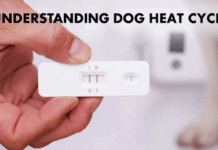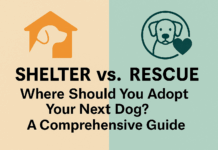Last Updated on March 13, 2024 by Dogs Vets
Leaving your furry friend at a dog hotel can be a stressful experience, not just for your pet but for you as well. Whether it’s your first time or you’ve done it before, the thought of leaving them in unfamiliar surroundings can be daunting.
Dog hotels, designed to offer care and comfort to your pet in your absence, have emerged as a popular solution for pet owners needing temporary lodging for their dogs.
Navigating the options and ensuring you choose the right place requires a bit of research and preparation. It’s similar to the process students go through when seeking the right assistance for their academic needs.
Just as a student might look for a reputable service like EssayPro to ensure their essay is in good hands, pet owners must find a dog hotel that provides the care and attention their pet deserves.
This comprehensive guide will walk you through everything you need to know about dog hotels, from selecting the right facility to preparing your dog for their stay!
We’ll cover essential aspects to consider, such as accommodation types, staff qualifications, safety measures, and additional services that can make your dog’s stay more enjoyable. So – let’s dive right in!
Choosing the Right Dog Hotel
Selecting the right dog hotel involves more than just googling “dog hotels near me” and picking the closest one. You’ll want to consider factors like the size and temperament of your dog, the level of activity they’re used to, and any special care needs they might have.
Visit potential facilities in person, if possible, to get a sense of the environment and how the staff interacts with the animals. Pay attention to cleanliness, security measures, and the overall vibe of the place—your intuition can be a powerful tool in making the right choice.
Understanding Accommodation Options
Dog hotels offer a range of accommodation options, from standard kennels to luxury suites. Some facilities provide communal play areas, while others offer private rooms with individual outdoor access.
Consider what environment your dog would be most comfortable in, especially if they’re not used to being around other dogs. Ask about the bedding and any personal items you can bring to make your pet feel more at home.
Staff Qualifications and Care
The qualifications and experience of the staff are crucial in ensuring your dog receives the best possible care. Look for facilities with trained professionals who understand animal behavior and can handle any situation that may arise.
Inquire about staff-to-dog ratios and how much individual attention your pet will receive. It’s also important to check how the hotel handles medical emergencies and whether they have a vet on call.
Safety Measures and Cleanliness
Safety should be a top priority when selecting a dog hotel. Check for secure fencing, surveillance systems, and protocols for preventing fights or escapes.
Cleanliness is equally important, as a clean environment reduces the risk of disease transmission. Ask how often the facilities are cleaned and whether they have a protocol for handling sick pets.
Additional Services and Amenities
Many dog hotels offer additional services and amenities to enhance your pet’s stay. These can include daily walks, playtime with other dogs, grooming services, and even spa treatments.
While these extras can add to the cost, they can significantly improve your dog’s experience, especially for longer stays. Determine which services are most important to you and your pet and factor these into your decision.
Remember, just as you would trust a service like https://essaypros.com to handle your academic needs with care and professionalism, finding a reputable dog hotel ensures your pet is in good hands while you’re away!
Preparing Your Dog for Their Stay
Preparing your dog for their stay at a dog hotel can help minimize stress and anxiety. If possible, arrange a visit or trial stay to help your dog get used to the new environment.
Ensure your pet is up-to-date on all vaccinations, as most facilities require proof of immunization. It’s also a good idea to pack familiar items, like their favorite toy or blanket, to provide comfort during their stay.

Navigating Cost and Booking Procedures
Cost is an important consideration when choosing a dog hotel. Prices can vary widely depending on the level of service and amenities offered. Be sure to understand what’s included in the daily rate and whether there are any additional fees for extra services.
Booking procedures can also vary, with some facilities requiring deposits or having specific check-in and check-out times. Make sure you’re clear on these details to avoid any last-minute surprises.
Final Thoughts
Leaving your dog at a dog hotel doesn’t have to be a source of anxiety. With proper research and preparation, you can find a facility that offers the care, comfort, and safety your pet deserves.
By taking the time to understand your options and prepare your dog for their stay, you can enjoy your time apart with peace of mind, knowing your furry friend is enjoying their little vacation!
Fact Check
We strive to provide the latest valuable information for pet lovers with accuracy and fairness. If you would like to add to this post or advertise with us, don’t hesitate to reach us. If you see something that doesn’t look right, contact us!

















